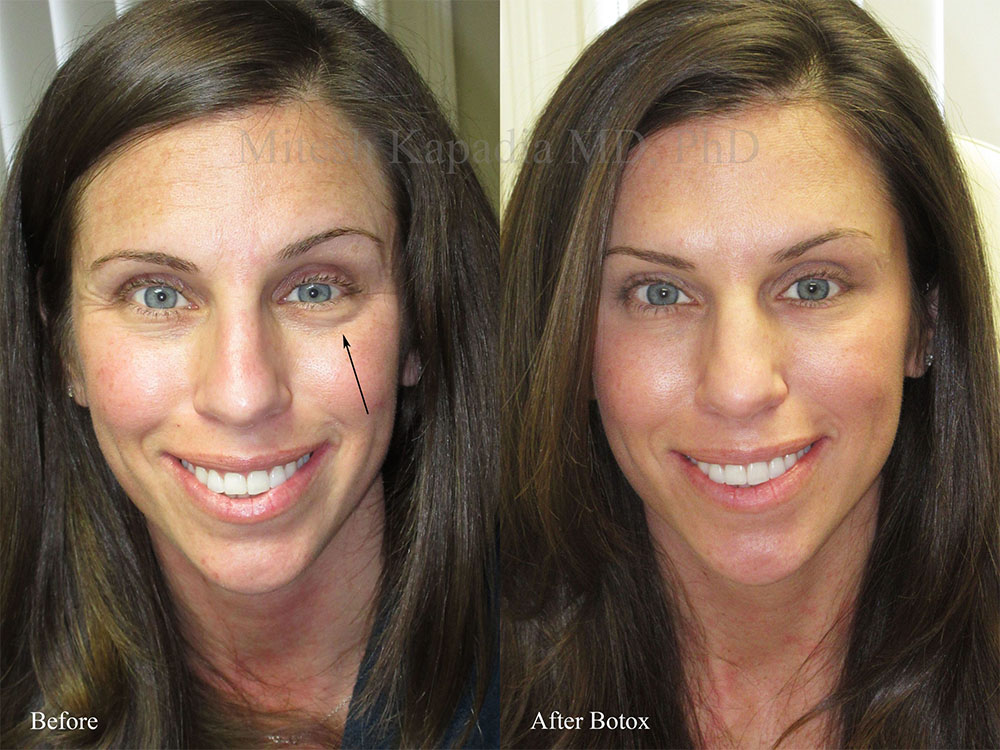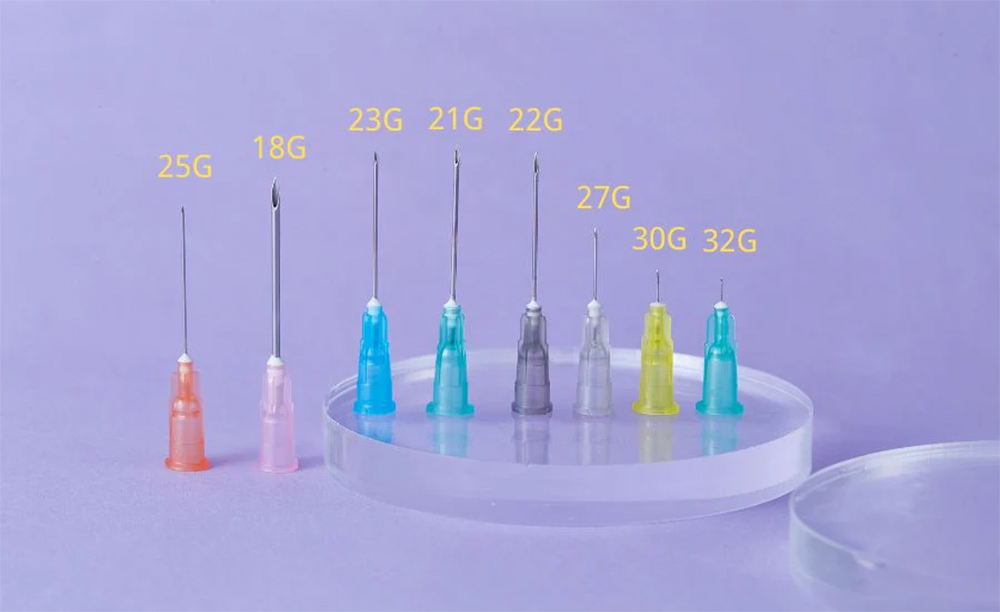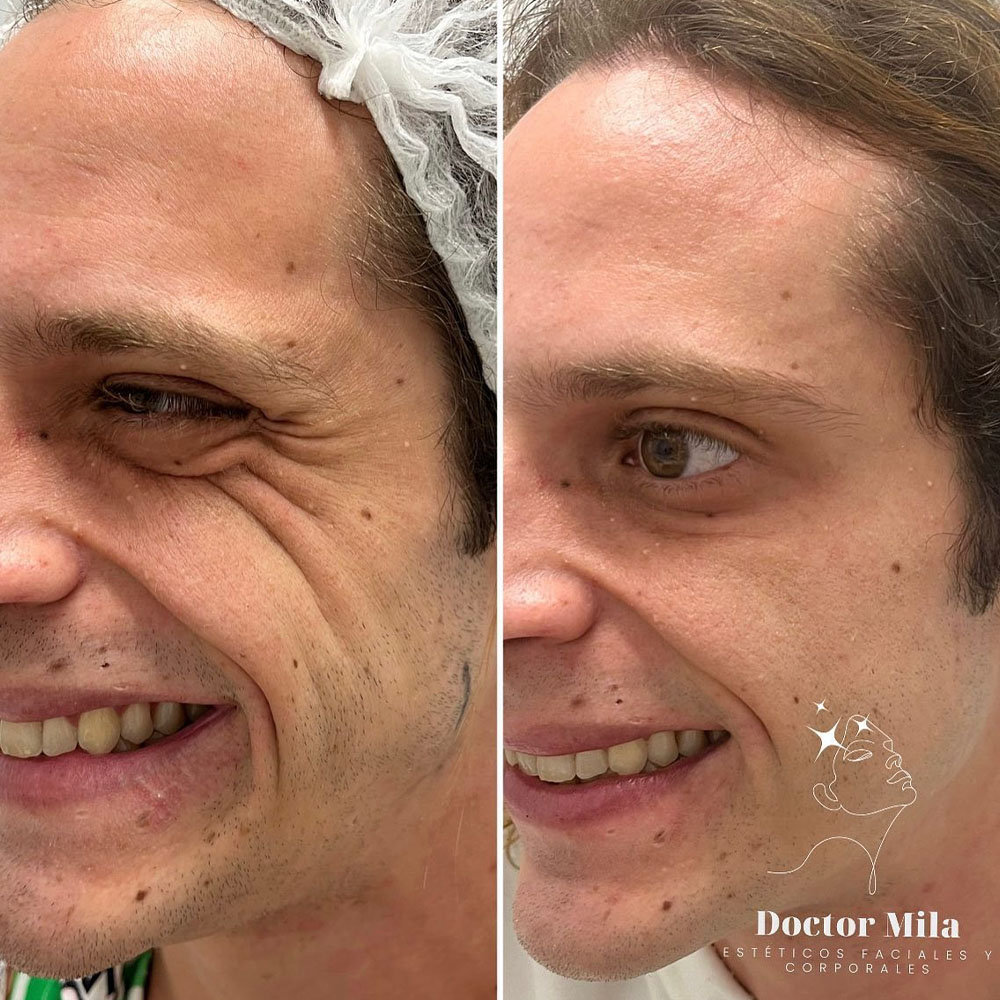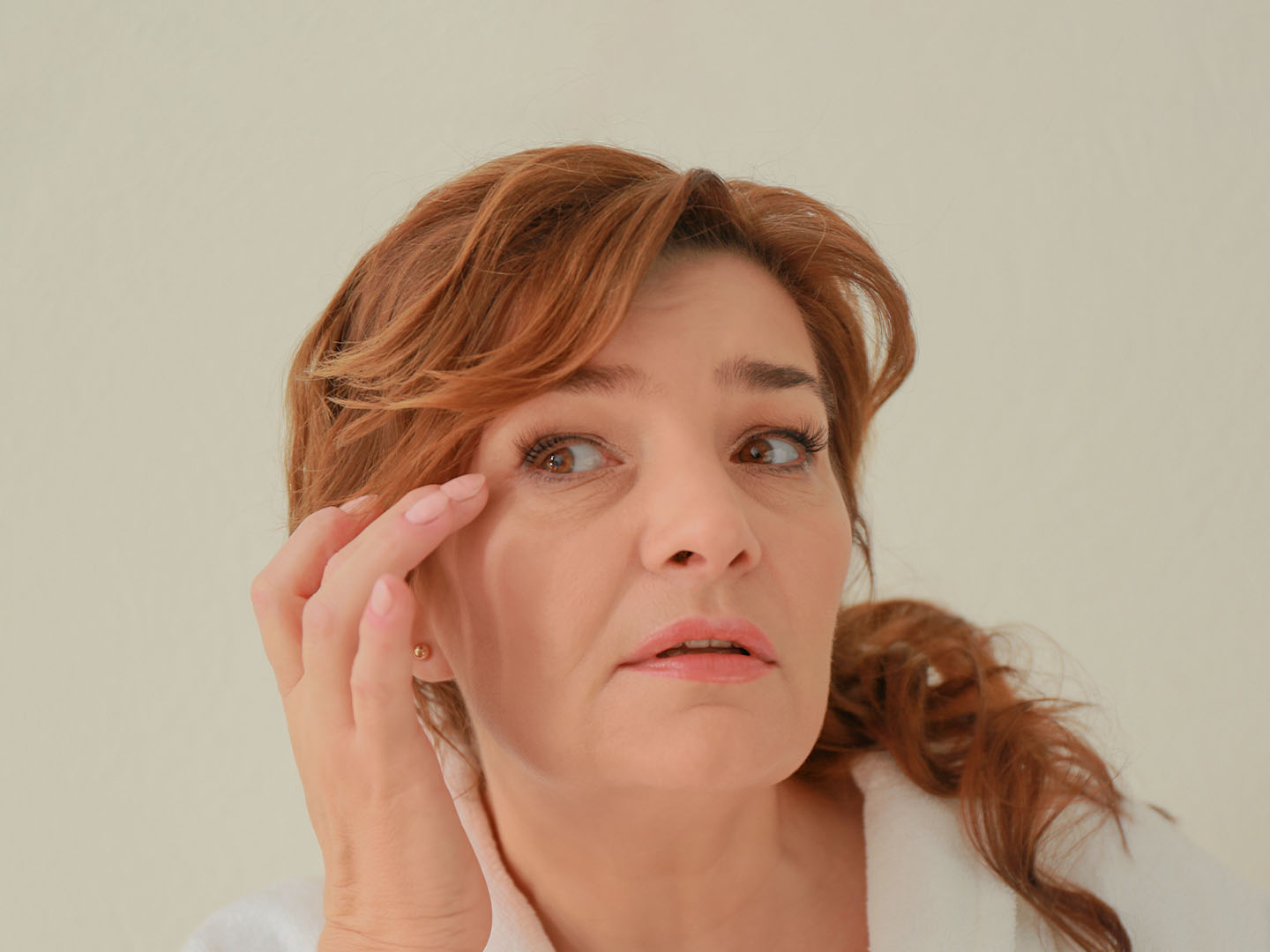
Under eye bags are among the most common aesthetic concerns patients present with, and one of the trickiest to treat. While dermal fillers are often the go-to for under eye hollowing, some patients with puffiness or muscle-related bulging may benefit from a less common approach: Botox for under eye bags. But can Botox really improve this area? When is it appropriate, and how should it be injected?
This article explores the role of Botox in managing under eye bags, outlines safe injection techniques, compares it with fillers, and helps practitioners determine when to incorporate this strategy into their aesthetic toolkit.
Can You Get Botox for Under Eye Bags?
Yes, but not in all cases. Botox (botulinum toxin A) works by weakening muscle activity. In the context of bags under the eyes, this means reducing contraction of the orbicularis oculi muscle, which can soften the appearance of bulges, especially if they are dynamic or worsened by smiling.
However, Botox is not suitable for all causes of under eye bags. If the puffiness is due to fat pad prolapse, fluid retention, or skin laxity, Botox alone will not correct the problem, and might even make it more noticeable in certain cases. This is why careful patient selection is key.

Does Botox Work for Under Eye Bags?
In the right hands and with the right patient, Botox under eyes for bags can deliver soft but meaningful improvement. It works best for dynamic puffiness caused by muscle contraction rather than static fat bulges or hollowness.
For patients seeking non-surgical solutions with minimal downtime, Botox may be a valuable option, but only with appropriate evaluation, conservative dosing, and a clear understanding of its limitations.
To expand your injection skills and learn to assess and treat the under eye area with precision, explore our aesthetic courses, including our soon-to-launch Botox training programs.
When Is Botox a Solution for Under Eye Bags?
Botox for under eye bags is best suited to patients with:
- Mild bulging that worsens with muscle contraction
- Strong orbicularis oculi activity contributing to the appearance of bags
- Skin that still retains decent elasticity
- No significant fat herniation or hollowing
In patients who experience bags under eyes after Botox for crow’s feet, the effect may stem from over-relaxation of lateral fibers, which disrupts muscular balance. This highlights the importance of adjusting the technique when addressing the lower eyelid.

Where to Place Botox for Under Eye Bags
Precise placement is essential when using Botox injections for under eye bags. Too deep or too lateral, and results may be ineffective or risky. Too superficial or central, and the risk of side effects increases.
Injection strategy typically involves:
- 1 to 2 units per side
- Placement just inferior to the lash line, 2–3 mm below
- A single point or linear technique, depending on the anatomy
- Superficial intradermal or subcutaneous injection
Always inject conservatively. Start with the lowest effective dose and assess muscle weakening over 1–2 weeks.
For more in-depth guidance on preventing side effects and treating complications in sensitive areas, refer to our Botox Complications Masterclass.

Injection Techniques for Botox Under Eyes
Due to the thin skin and proximity to the globe, advanced skill is needed when injecting Botox near the infraorbital rim.
Best practices include:
- Using a 32G needle
- Injecting superficially to avoid diffusion into unintended areas
- Targeting the medial or central lower eyelid, avoiding the canthal area
- Having the patient smile gently to identify dynamic bulging
Avoid treating the area in patients with pre-existing lower lid laxity, large fat pads, or a negative vector midface. In such cases, neuromodulation can worsen support and increase scleral show or lid droop.
Learning administering Botox the righ way is the key. Take a look at our article on How to become a Botox injector.

Results: Botox for Under Eye Bags Before and After
Results with Botox under the eyes tend to be subtle but noticeable. Patients may observe:
- A smoother under eye contour at rest
- Less bulging when smiling
- Reduced tired appearance
Onset begins around day 4 to 7, with full effects seen at 2 weeks. Results last approximately 3 months.
Practitioners should manage expectations. This is not a structural correction but a functional relaxation of muscular contribution to the bagging. Ideal candidates will appreciate soft improvement rather than dramatic change.

Is Botox or Filler Better for Under Eye Bags?
Choosing between Botox and filler for under eye bags depends entirely on what’s causing the appearance of the bags.
Botox works by relaxing the orbicularis oculi muscle, which can help reduce dynamic bulging that becomes more visible when the patient squints or smiles. It's most effective when the puffiness is related to overactive muscle movement rather than structural volume issues. Patients with early signs of under eye bags that appear or worsen with expression, especially when smiling, may benefit from small amounts of Botox to soften the movement.
Dermal fillers, such as Juvederm under eyes, are more appropriate when the concern is related to volume loss, such as tear trough hollowing, or when there's a sharp contrast between the orbital rim and midface. Filler helps to smooth the transition, reducing the shadowing that makes bags appear more prominent. In some cases, a touch of filler can camouflage mild fat pad protrusion by balancing surrounding tissue.
In patients with mixed causes (both hollowness and mild muscular puffiness), a combination approach using both filler and Botox may provide the most natural and balanced result. However, it’s essential to proceed cautiously, as both treatments in the infraorbital area require precise technique and careful dosing to avoid complications like Tyndall effect, nodules, or lid malposition.
For patients with more advanced fat herniation or skin laxity, neither Botox nor filler will be sufficient on their own. These individuals may be better served by energy-based skin tightening, microneedling with regenerative serums, or referral for lower blepharoplasty.
Cost of Botox for Under Eye Bags
The cost of Botox for under eye bags varies by provider, region, and units used. Patients typically need 2 to 4 units per treatment, costing between $100 to $300 per session. Given the subtlety of results, it's important to discuss outcomes clearly during consultation.

FAQ: Botox for Under Eye Bags
Does anything really work for under eye bags?
Yes, but the right treatment depends on the cause. Mild puffiness may respond to Botox, while hollowing benefits from fillers. Severe bags often require surgical correction.
What to do instead of under eye fillers?
For patients not suitable for filler, consider Botox, microneedling, radiofrequency, or topical peptides to address skin quality and muscle dynamics.
How to get rid of under eye bags permanently?
Surgical lower blepharoplasty is the most permanent solution, especially for fat pad herniation. Non-surgical options can offer temporary improvement.
How many units of Botox do I need for under eye bags?
Most patients need 1 to 2 units per side, depending on muscle strength. Always start with the lowest dose and reassess after 2 weeks.
Can microneedling reduce eye bags?
Microneedling can improve skin texture and firmness, which may slightly reduce the appearance of bags, especially when paired with PRP or exosomes.
Final Thoughts
Botox for bags under the eyes isn't a miracle fix, but in well-selected cases, it can offer a subtle, non-invasive improvement. Understanding the anatomy, patient goals, and limits of neuromodulation is essential for safe and effective outcomes.
Whether you’re deciding between filler or Botox for under eye bags, or aiming to refine your technique, ongoing education is key. Explore our advanced aesthetic courses to stay at the forefront of safe, effective under eye rejuvenation.
Sources
- Zhou S, Liu H, Pan Z, et al. Observation of Safety and Efficacy of Botulinum Toxin Type A in the Treatment of Tear Troughs and Mild Yelid Bags. J Cosmet Dermatol. 2025;24(6):e70253. doi:10.1111/jocd.70253 https://pubmed.ncbi.nlm.nih.gov/40465370/
- Vrcek I, Ozgur O, Nakra T. Infraorbital Dark Circles: A Review of the Pathogenesis, Evaluation and Treatment. J Cutan Aesthet Surg. 2016;9(2):65-72. doi:10.4103/0974-2077.184046 https://pubmed.ncbi.nlm.nih.gov/27398005/
- Kołodziejczak A, Rotsztejn H. The eye area as the most difficult area of activity for esthetic treatment. J Dermatolog Treat. 2022;33(3):1257-1264. doi:10.1080/09546634.2020.1832189 https://pubmed.ncbi.nlm.nih.gov/33017271/
- Goel A, Sethi P. Concealing of under eye orbital fat pads with hyaluronic acid filler: A case report. J Cosmet Dermatol. 2020;19(4):820-823. doi:10.1111/jocd.13097 https://pubmed.ncbi.nlm.nih.gov/31410995/
*This article is intended for licensed medical professionals. All protocols, dosages, and treatment insights referenced herein are based on published literature. The content is not intended to encourage application, diagnosis, or self-treatment of unlicensed individuals, and should not be used as a substitute for the clinical judgment of a qualified healthcare provider.
Disclaimer:
This article is intended for licensed medical professionals. All protocols, dosages, and treatment insights referenced herein are based on published literature. The content is not intended to encourage application, diagnosis, or self-treatment of unlicensed individuals, and should not be used as a substitute for the clinical judgment of a qualified healthcare provider.

